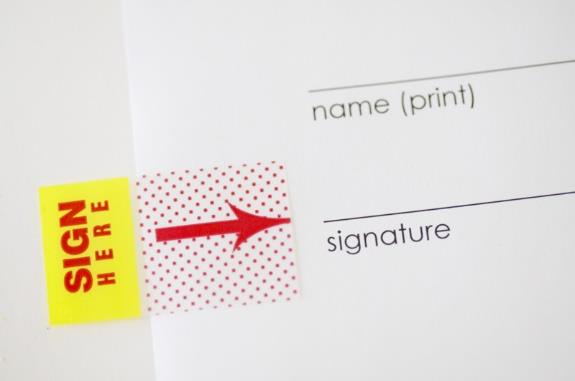Building Quality into the Process
What is quality?
Quality is a subjective term which can be defined differently depending on the person. Dictionary.com defines quality as being of high grade, superiority, or excellence. The American Society of Quality defines it as a product or service free of deficiencies. While people may have differing opinions on how to define it, the customer’s definition of quality is the one that matters the most.
What does it mean to “build quality into the process”?
Built-in quality (BIQ) means that every step of the process is designed to achieve high quality and to prevent any quality defects from entering the process or being passed on to the customer. Quality inspections are not just an afterthought that happens haphazardly at the very end, but rather they are occurring constantly throughout the process. The work is designed to detect quality errors or to prevent them from occurring all together. In basic terms “built-in quality” can be achieved by doing these three things:
1. Do not “accept” quality defects into your process
2. Do not “make” quality defects in your process
3. Do not “pass-on” quality defects to your customer

1. Don’t accept defects into your process
The first place quality problems can make their way into our products and services, is when they are passed into our process from somewhere else. We all have suppliers or sources of information that we rely upon to do our work. If those sources are providing bad or defective information, those quality problems can make their way through the process and eventually to the customer.
How do you defend against this? The answer is to build preventative measures into your process to make sure quality defects are not allowed to enter the process in the first place. Stop them at the very beginning, before they cause you or
anyone else problems. This sounds easy in theory, but can often prove difficult. The key is always be striving to find ways to keep the defects out. Here are some ways you can approach this:
- Identify your sources/suppliers and what defects they can potentially pass on to you
- If possible, the best case scenario is to find a way to prevent the defect from occurring. This may often involve working with your supplier to find a good solution.
- When it is not possible to find a way to prevent the mistake from happening (which is common) the next best thing you can do is to make sure you have a reliable way to identify defects up front. This may involve inspections or quality checks of incoming information before it is used. If you can make it easy for people or machines to spot defects and stop the process up front, this will help tremendously.
Below: example 1
Often times, when we give an appliation to someone to fill out, they miss signing or filling out important fields. In order to help ensure that the forms come back completely filled out, you can highlight key fields to make it easy for people to see exactly what they need to complete. This is an example of building quality into the process so that incoming applications are complete when they arrive.

Below: example 2
Here we see a nurse scanning the bar code on a bottle of medicine. This is a critical quality check in hospitals to make sure the right medicine has been supplied for the patient and to prevent the wrong medicine from being used. The computers can help the people to detect the mistake up front.

2. Don’t make defects
The next place quality defects come from is when they are made during the process. Even the most well designed processes can produce quality problems. It is critical to build quality into your process so that these types of quality issues do not occur. Here are a few things you can do:
- Analyze each step of your process to determine where and what type of potential quality defects can occur.
- Come up with ways to change your process to prevent quality defects from happening
- Make sure people are properly trained and given the right tools to detect when a quality issues has occurred
- Create a team culture where people are comfortable spotting quality problems and stopping the process so problem can be fixed
Below: example 3
This is a tool for McDonald’s employees to measure hamburger size. It helps them detect if anything was accidentally left off and that the buns have the right thickness. This is one way McDonald’s is trying to build quality into their process.

Below: example 4
An Excel macro was developed to create a report that was previously done manually. Using the macro prevents some potential errors and mistakes from being “made”.

3. Don’t pass on any quality defects to the customer- everyone is a quality inspector
The last line of defense against quality defects occurs at the end of the process. Hopefully if you have not “accepted” or “made” any problem in your process, it should be easy to not “pass-on” anything. This is not always the case however, and unless you have completely eliminated problems from happening, you may need to put something in place at the end of your process to make sure no defects are passed onto your customer. To achieve this it is important that everyone sees part of their job as being a quality inspector. As people build products and services, they should also be inspecting them for quality. Here are some ways to do this:
- Identify the most common quality issues that make it through your process
- Train people and provide proper tools to detect quality defects
- Constantly try to trace any quality defects back to their source and see if you can put preventative measures in place.
Below: example 5
Hospital credentialing is an example of building quality into the process. It is a way to verify and validate the qualifications and credentials of a physician to help make sure they will be able to provide the right patient care.

Below: example 6
In this picture we see Toyota quality inspectors checking the quality of finished vehicles at the end of the production line. They check key
components to make sure no defect is “passed-on” to the customer.

Levels of built-in quality
Built-in quality doesn’t happen overnight and has many levels of progression. What level are your processes at? Start basic and work to get more advanced over time.

Quality is free
One of the reasons that building quality into your process is so important is because it can save you time, money and headaches. The example below of entering billing information into the system shows how taking an extra minute to ensure quality can save hours of time down the road.

Thus a one minute quality check can save over 31 days’ worth of time, waiting, and headache in the long run. Not only that, but think of cost associated with all the extra work to resolve the problem. Most importantly think about how one minute to ensure quality could have saved the reputation and trust that is lost with a client when defects and problems like this happen. When all is said and done, in the long run built-in quality is always free when compared with the alternative.
Example behaviors of “built-in quality”
- Examples of ideal “Built-in Quality” Behavior:
- Proactively putting things in place to prevent or detect defects
- Stop work to fix errors before continuing
- Take ownership over quality of work
- Being open and honest about defects and quality issues
- Work with your upstream suppliers to improve quality
- Work with your downstream customers to improve quality
Examples of poor “Built-in Quality” Behavior:
- Reactive firefighting when problems occur
- Passing on a “defect” to the customer
- Hiding defects or problems
- Blaming others and pointing fingers
- Ignoring quality- being complacent
- Incomplete or missing data
